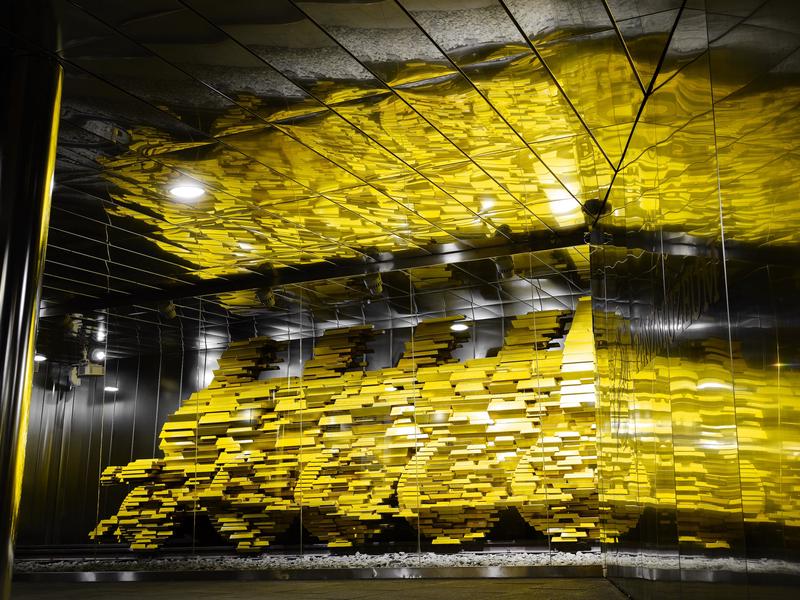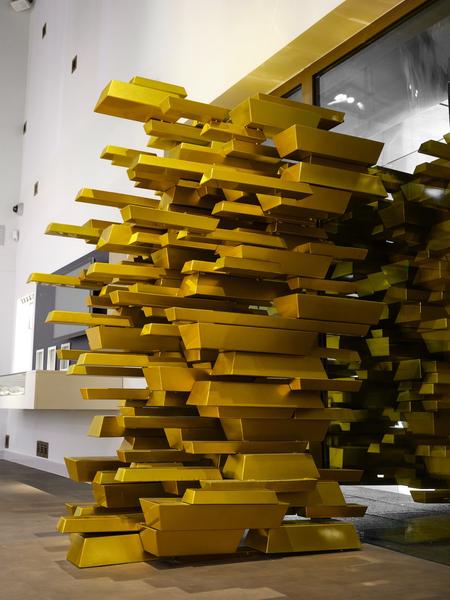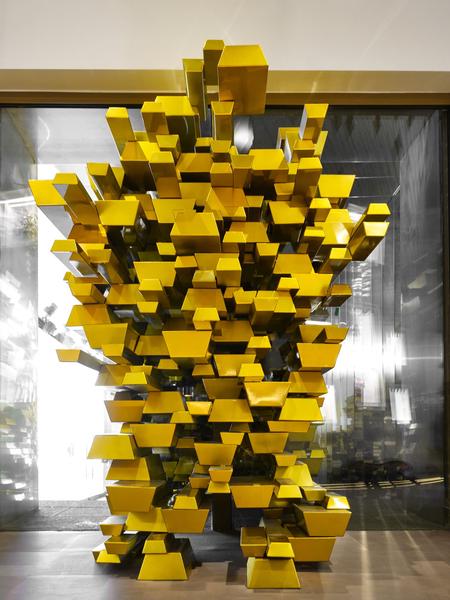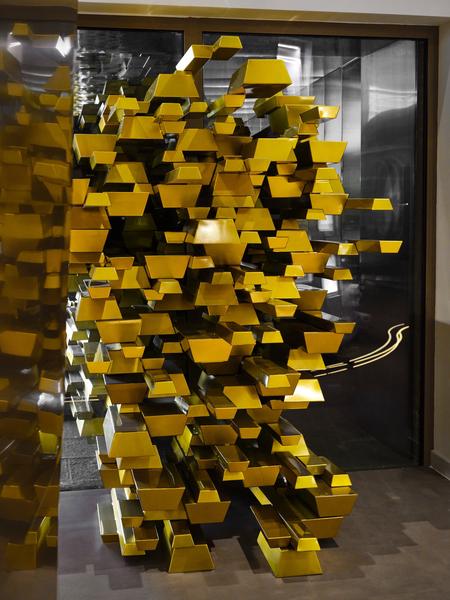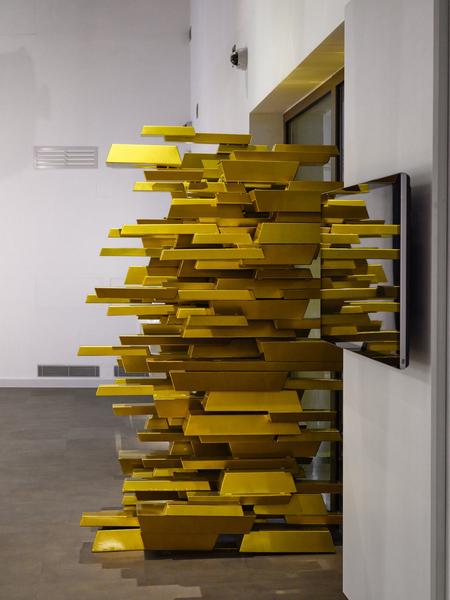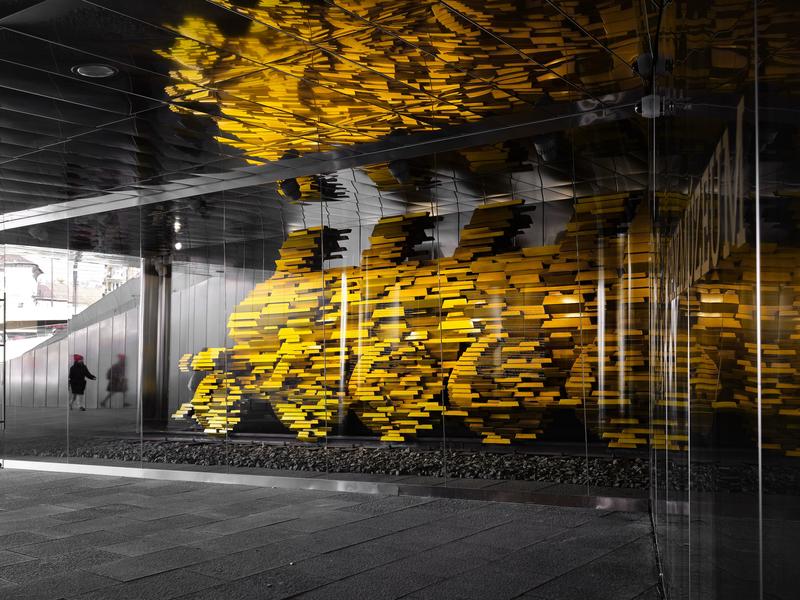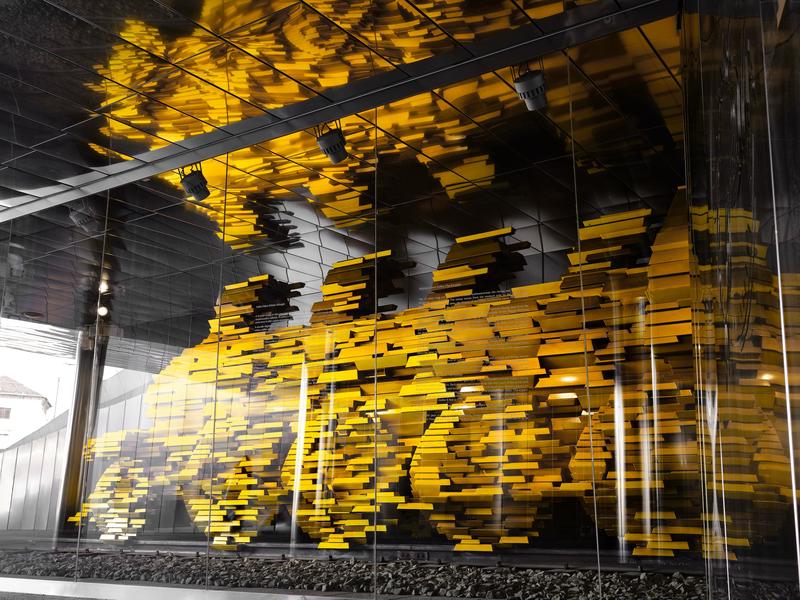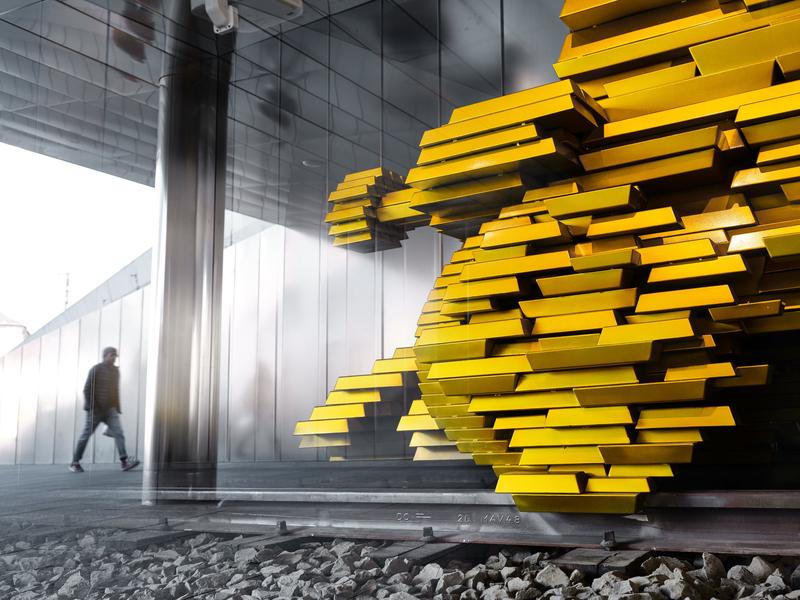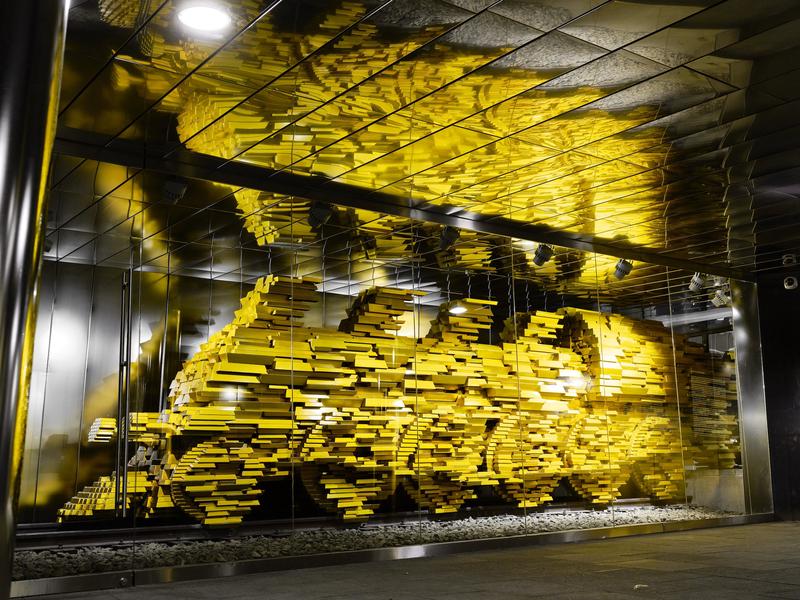About the artwork
The 13 meter long and over 13 ton creation responds to the rescue and return of the Hungarian national assets. The statue moves from the museum area to the Széll Kálmán square, crossing space and time: the history of the steam locomotive starts from the 20th century and continues in the 21st century.
At the end of World War II, a train carrying Hungarian gold reserves fleeing west from the occupying forces left the Hungarian border in 1945 with employees of the National Bank of Hungary, who, at the risk of their lives, voluntarily undertook to preserve national assets and not hand it over to foreigners. After long diplomatic negotiations and thanks to the decisive action of the bank’s management, finally in 1946, with the help of the American army, the entire gold reserve of the National Bank, more than 30 tons of gold, was fully returned to Hungary.
The sculpture of Gábor M. Szőke – in addition to the history of gold train – represents the engine and the progress of the economy. The artist wanted to capture these abstract concepts and the movement itself, with abstract tools. This is how the idea of the locomotive was born, which has been the motif of progression since the first industrial revolution, both in literature and the fine arts.
Although in the creative world of Gábor M. Szőke, supernatural animals and beings mostly appear, in this sculpture the machine and the movement comes to the fore. The elements representing the shifted gold bars visualize the movement phases which motif also makes reference to Italian futurism, where works are most often named after a process. That is why the sculpture got the name: The Rumble.
The sculpture consists from about 7000 “gold bars” cut, bended and manually welded one by one from stainless steel bars. Each element was prepared by the own team of the artist with the participation of welders and sculptors. The golden blocks bring about a dynamic plastic art in the space: a contemporary locomotive scooter in the air is created from them. The experience of speed and movement is also emphasized by the lighting, which – with the help of switching lights in phases – makes it feel as if the train is rattling in the stomach of a tunnel. Passing through the Széll Kálmán square passage, all passers-by can meet the statue, but it can only be viewed in its entirety if those interested also enter the exhibition space ‘The Rumble’ pays respect to the brave people, thanks to whom the nation’s gold reserves returned to Hungary and thus, when the forint was introduced in 1946, it could serve as its cover.

